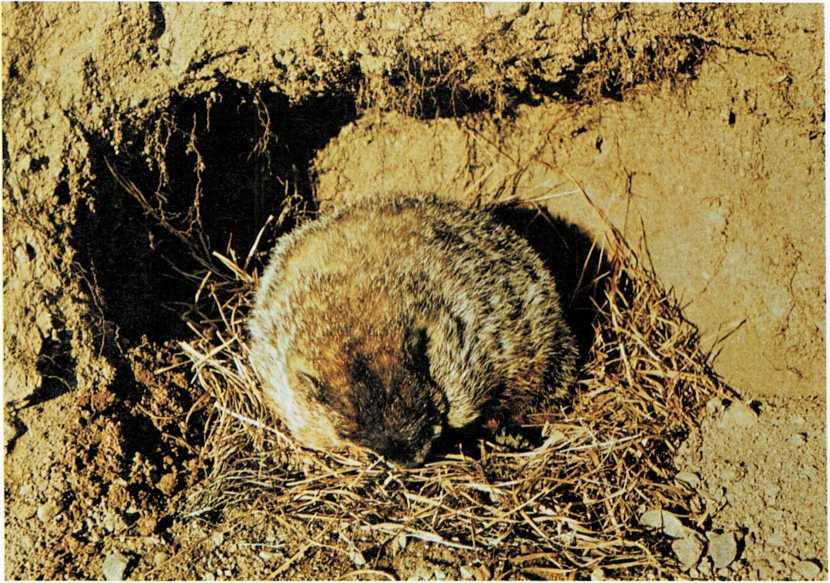A long winter nap
In the autumn, a woodchuck curls up into a ball in its underground home
and goes to sleep. And it sleeps during the whole winter.
The woodchuck’s sleep isn’t like the sleep you have at night. The
woodchuck’s heart slows down and nearly stops. The woodchuck’s breathing
nearly stops, too. And the woodchuck’s body changes. Most of the time
the woodchuck’s body is warm because it is a warm-blooded animal. But
the woodchuck’s body grows cold before it goes into its winter sleep.
The woodchuck’s sleep is called hibernation. Ground squirrels, bats, and
some other warm-blooded animals also hibernate in the same way. Bears
hibernate too, but their bodies do not get as cold as do the bodies of
the smaller animals.
Snakes, turtles, frogs, and toads also hibernate, but in a different
way. A snake is cold-blooded. Its body is always just as warm or cold as
the air around it. So as the weather grows colder a snake’s body grows
colder. The snake tries to get warm by crawling into a hole. The weather
gets colder and the snake’s body gets colder and stiff. Its heart and
breathing nearly stop.
The snake must wait until warm weather comes before its body warms up
enough so that it can move. But the woodchuck’s body warms up by itself,
long before warm weather comes. There’s often snow still on the ground
when the woodchuck wakes up and scampers out of its hole.

Woodchuck
A woodchuck sleeps all winter in its underground home. This kind of long
sleep is called hibernation.

In winter a snake’s body gets so cold and stiff it can’t move until warm
weather comes. This is a kind of hibernation, too.
Water Snake

